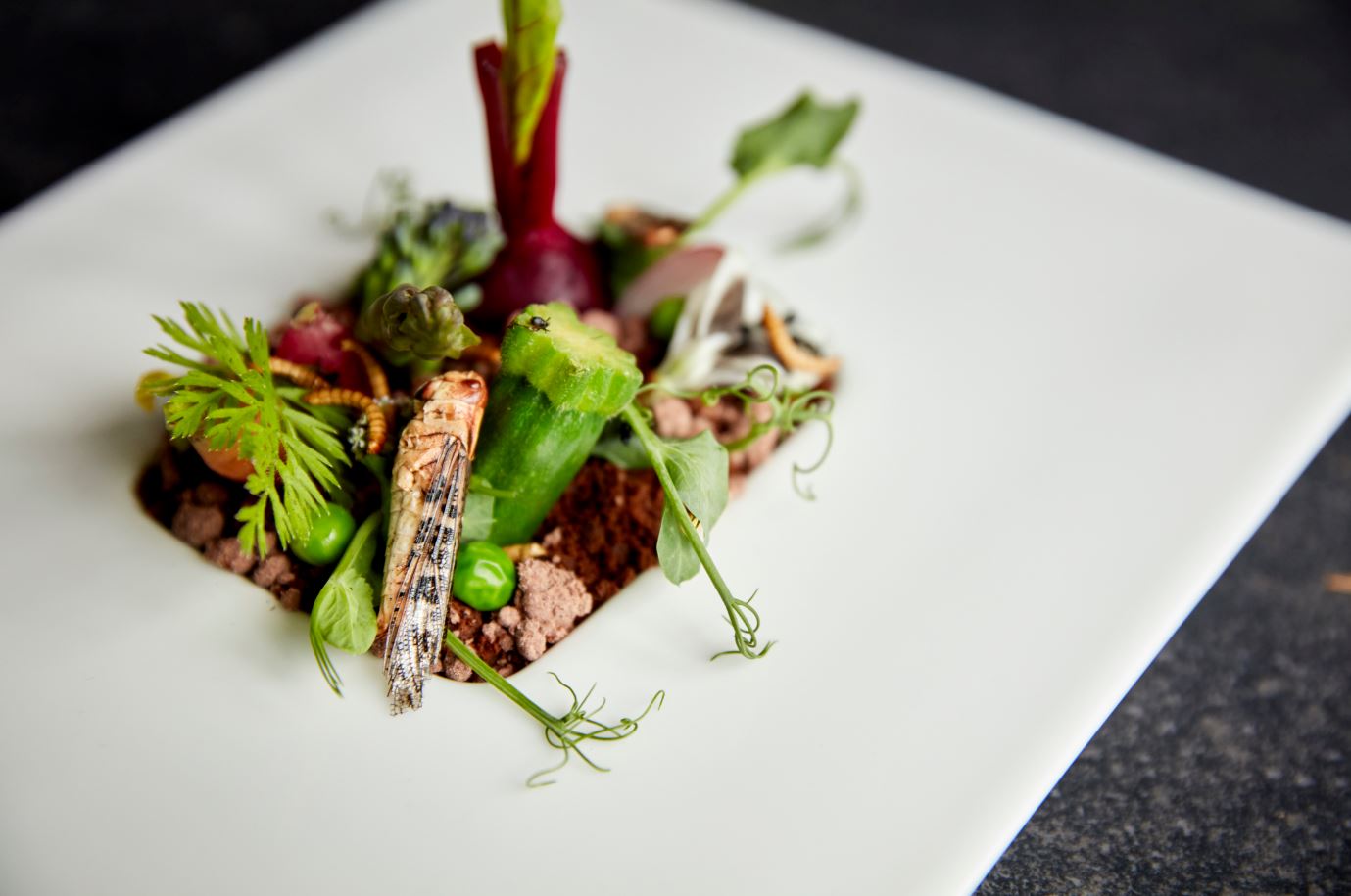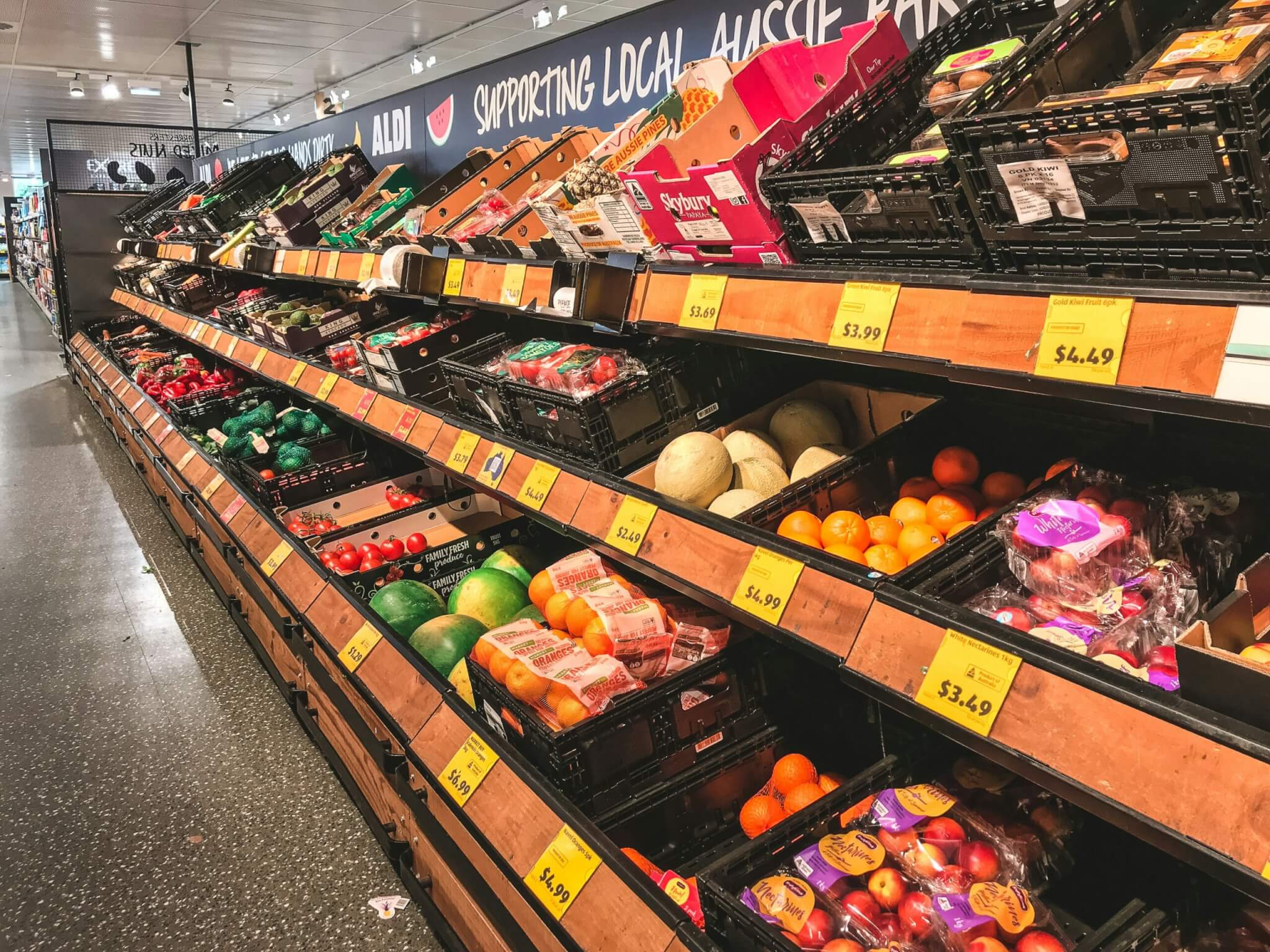There’s a certain disgust often associated with mini beasts and creepy crawlies. But what if these nutritious little critters hold the key to reducing our carbon emissions and could ultimately help save the planet?
Entomophagy, the practice of eating insects, could dramatically reduce our greenhouse gas emissions and be a far more sustainable protein source than beef, lamb and chicken. A report by the UN Food and Agriculture Organization (FAO) in 2013 urged more people to eat insects and suggested that insect farming was one of the many ways to address food and feed security.
While us Brits might feel squeamish about munching on mealworms and crunching into crispy crickets, insects are part of the staple diet in many cultures. In fact, more than two billion people in 80 per cent of the world’s countries already consume more than 2,000 types of edible insects, from silkworm snacks in Asia to grasshopper quesadillas in Mexico.

Entomologist and founder of Pembrokeshire-based Bug Farm Foods, Sarah Beynon, believes that insects can be part of the solution to feeding a growing global population: “By farming insects sustainably, we can produce more healthy protein with a smaller carbon footprint while using fewer resources – less feed, less land, less water. These future foods can help plug the gap, instead of further intensifying animal production and putting more pressure on our current farming systems.” Insect farms are contained entities so nothing leaches out into the environment, explains Beynon; there’s no need for antibiotics or synthetic chemicals, waste products can be repurposed as fertiliser, plus insects are thigmotactic and actively cluster together so intensive farming, in this case, results in high welfare.
Beynon and her partner, chef Andy Holcroft, launched Grub Kitchen, the UK’s first-ever edible insect restaurant in 2015. While whole insects do garnish the plates “because people come here for that experience”, generally insects are ground into a powder and used as a cooking ingredient to make cricket falafels, toasted cumin mealworm hummus or signature bug burgers (a blend of toasted crickets, mealworms and grasshoppers, spinach, sundried tomato and seasonings).

For Beynon, transparency is crucial: “We should embrace and respect the fact we’re eating an animal but we don’t usually eat whole animals and we don’t need to see legs sticking out or look at the faces of insects.”
According to the couple, cooking with insects is like opening up a whole new larder of ingredients: “Our cricket cookies have a malty flavour, mealworms and buffalo worms taste nutty, black ants are zingy and lemony, and cooked locusts taste like prawns,” says Beynon, a huge advocate for their high nutritional value. Insects are a dense source of protein (half the mass of one cricket is protein), while some insects are rich in Omega 3, vitamin B12 and iron.
“Flour is a good way to begin as it feels one step away from eating insects, and it adds a malty, hazelnut-y, rich umami depth of flavour,” says food writer Christine MacFadden, who replaced 10 per cent flour with roasted ground cricket powder (she recommends Gryllodes sigillatus) for the rum-soaked prune and sultana cake recipe in her comprehensive book Flour. “This was the first time I cooked with insect flour and I was very intrigued because I love trying new ingredients but there is that hard-wired yuk factor and that’s a matter of culture,” says MacFadden who wonders if renaming insect ingredients might help consumers get over squeamish feelings.

“It would be great to normalise grubs as a protein source – when compared to beef farming, grubs need just two per cent of the land and four per cent of the water to produce each kilogram of protein, which means they generate 96 per cent less greenhouse emissions,” says Tom Neish, founder of Yora, the UK’s first insect-based pet food (which apparently has a rich, mushroom-y taste). He believes that insects represent an untapped resource and could dramatically reduce the carbon ‘pawprints’ of the 500 million pet cats and dogs that consume a shocking 20 per cent of the world’s meat and fish.
“It’s crazy that we weren’t already using insects as a food source for pets – it’s way more environmentally friendly than feeding pets human-grade meat,” says Neish, who sources tonnes of black soldier fly larvae from a hi-tech, purpose-built facility in Holland, where the grubs are tended to by a robot nurse. “Insect farming is the only way of intensively rearing animal protein that is ethically sound, and ideal to be used to feed livestock and farmed fish and prawns too.”
Farming insects requires the same levels of animal welfare and respect as any other animal farming. “Our insects are killed ethically by freezing,” the Bug Farm Foods website states. “This causes their bodily functions to slowly shut down, as they would in response to cold weather.” In the wild, insects would wake up with a rise in temperature, but if they are held at a low temperature for a long period, they simply do not wake up again.
Beynon says eating insects is nothing new: “We already unknowingly eat 500g of insects every year in grain products such as pasta and bread – it’s too much work to remove them when harvesting crops. In chocolate, you might eat up to 60 fragments of insect in every 100g chocolate bar – cacao is pollinated by insects, so there are a lot of insects buzzing around.” In November 2018, Sainsbury’s became the first UK supermarket to stock whole insects, while the global trend for edible insects is on the rise with a market estimated to become more than $700 million by 2024. But for Beynon, there is still work to be done: “We need serious products and serious ingredients that taste great so we can get away from that novelty yuk factor.”
Baking with insects
If you are curious about cricket flour, try it first in this low-fat cake. A relatively small amount is combined with wheat flour, sweet spices, rum-soaked prunes and sultanas. The flour adds extra protein, making this a particularly nutritious cake. Allow plenty of time for soaking the prunes and sultanas.
Rum-soaked Prune and Sultana Cake, by Christine McFadden
Makes one 23cm (9in) cake
Ingredients
250g (9oz) soft pitted prunes
85g (3oz) raisins or large sultanas
150ml (5fl oz) rum
oil for greasing
100g (3½oz) self-raising flour
100g (3½oz) wholemeal self-raising flour
25g (1oz) organic cricket flour, order online or mix cricket powder with regular flour
1 tablespoon mixed spice
½ teaspoon sea salt
2 tablespoons rapeseed oil
2 eggs, lightly beaten
4 egg whites
apple juice concentrate or clear honey to glaze
40g (1½oz) skinless toasted hazelnuts, halved
40g (1½oz) good-quality candied citrus peel, such as orange, bergamot or lemon, diced
Method
Soak the prunes and raisins in the rum for 3 or 4 hours, or overnight. Drain, reserving the liquid, chop the prunes roughly and set aside.
Grease the base and sides of a 22–23cm (8½–9in) loose-bottomed cake tin. Line with baking parchment and grease the paper too. Preheat the oven to 170°C/Gas Mark 3.
Put the three flours, mixed spice and the salt into a sieve set over a bowl. Muddle with your fingers, then shake through the sieve. Sieve once or twice more until well blended.
In a large bowl, beat together the oil, 100ml (3½fl oz) of the reserved rum and the whole eggs. Stir in the prunes and raisins, followed by the flour mixture.
Beat the egg whites in a separate bowl until stiff but not dry. Fold about one-third of the whites into the batter to slacken it, then gently fold in the rest. Pour into the prepared cake tin.
Bake for 50–60 minutes, rotating every 20 minutes, until a skewer inserted in the centre comes out clean. Leave in the tin for 10 minutes before turning out on to a wire rack. Paint with the apple juice concentrate while still warm, then strew with hazelnuts and candied citrus peel. Leave to cool completely before slicing.
Flour by Christine McFadden (Absolute Press, £26) is out now










Why do you want to eat insects when there is a whole plethora of plant foods you can eat and live very well. Humans do not need animal protein to survive and thrive. What if there is a breach of security and you get a plague of insects eating the plant crops that humans can eat. It’s just madness!